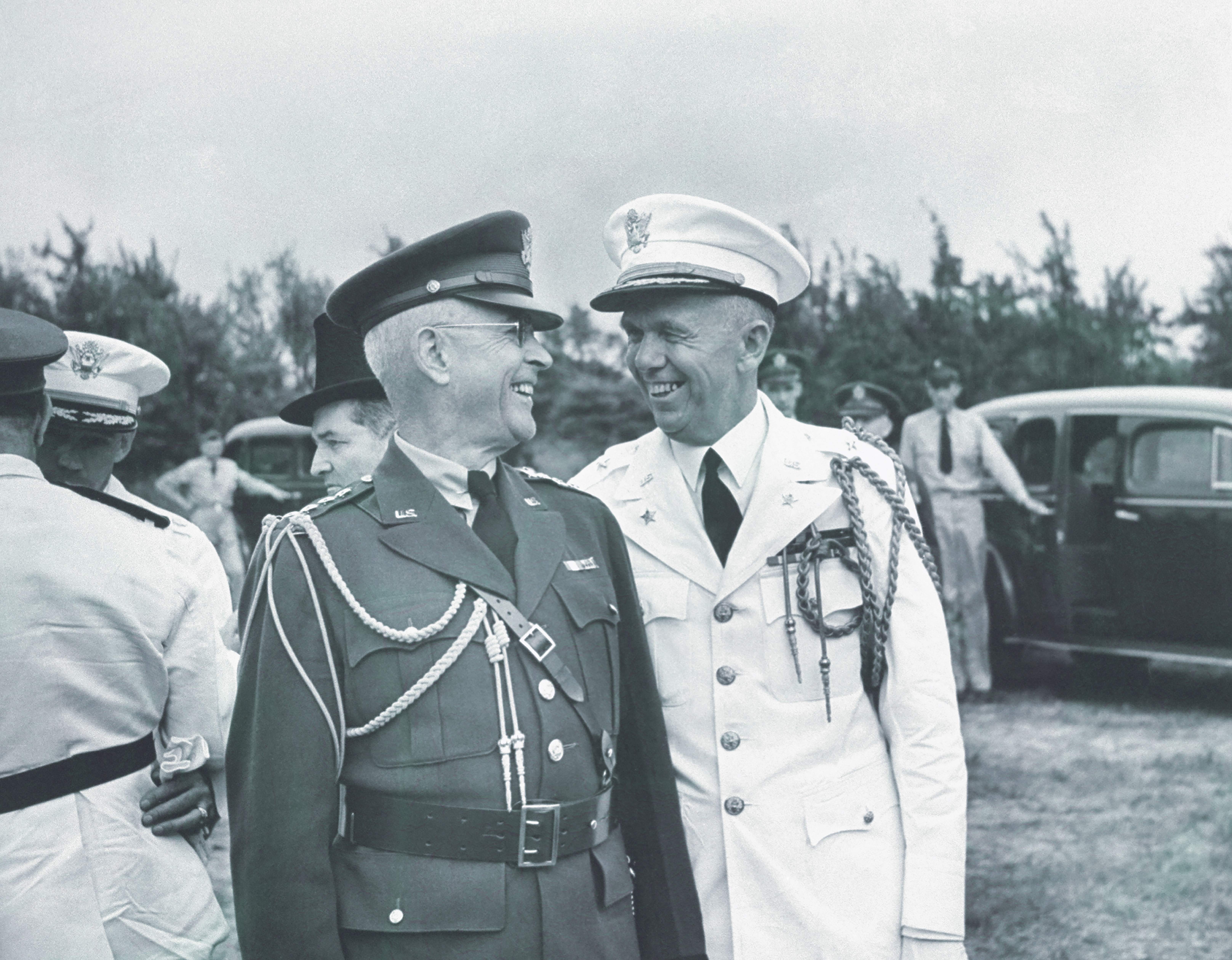As prewar U.S. Army chief of staff, Craig laid the groundwork for his famed successor.
GENERAL OF THE ARMY George C. Marshall is justly remembered as America’s “Architect of Victory” in World War II. From the day he took over as U.S. Army Chief of Staff in September 1939 until the war’s end, the army grew from a force of only 187,890 to more than 11 million. In addition to recruiting the force, the new troops had to be trained, equipped with modern weapons, organized into fighting units, deployed throughout the world, and logistically sustained. It was a herculean task.
Largely forgotten today, however, is the fact that Marshall did not have to start from ground zero on the day he assumed office. His predecessor as chief of staff, General Malin Craig, clearly saw the looming global conflict and understood what America had to do to get ready. With his tenure as chief of staff sandwiched between General Douglas MacArthur and Marshall—two towering giants of American military history—Craig has long-since been eclipsed. Nonetheless, Craig spent his four years in office working tirelessly, most of it behind the scenes, to begin correcting the army’s most serious deficiencies. He also knew exactly who had to replace him when his term ended to carry the process through. He brought Marshall to Washington, D.C., groomed him as his successor, and played a major role in assuring that Marshall would lead the U.S. Army through the coming world war. Without the foundation Craig had left for him, Marshall would have faced a far more daunting—and perhaps even impossible—task.
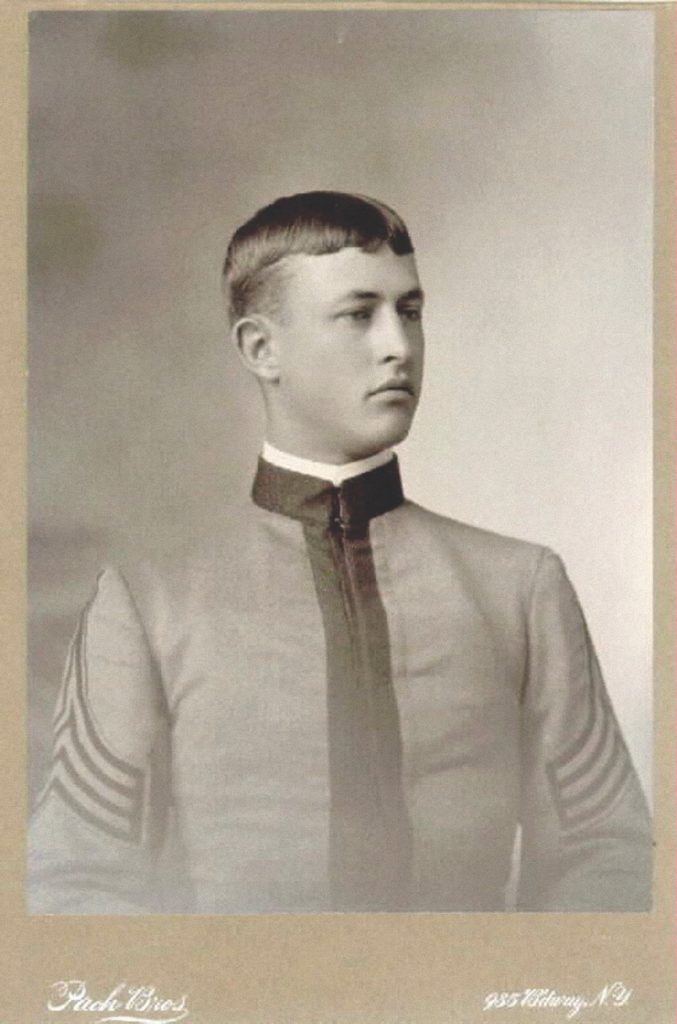
THE DESCENDANT OF several generations of U.S. Army officers, Malin Craig was born in Saint Joseph, Missouri, in 1875 and graduated from the U.S. Military Academy at West Point in 1898. A cavalry officer, he served in Cuba, the Philippines, and China and, between overseas assignments, at isolated cavalry posts in the American West and on the Mexican border.
It was while he was in command of a cavalry troop at Fort Clark, Texas, in July 1905, that Craig first encountered George C. Marshall, then a lieutenant. Marshall had been out in the field for a long time, leading a mapping expedition. When he arrived at Fort Clark to requisition a replacement horse for his party, he was wearing a ragged, dusty uniform and an old straw hat that was missing a chunk, thanks to a mouthy mule. Not sure if Marshall was an officer, Craig spoke only with the sergeant accompanying him. It was an inauspicious start to what, 30 years later, would be one of the most important military working partnerships in modern U.S. Army history.
Just months earlier, Craig had graduated from the newly established U.S. Army Staff School at Fort Leavenworth, Kansas, making him one of the United States’ first formally trained general staff officers. Four years later, in 1909, he attended the U.S. Army War College in Washington, D.C. There, a West Point classmate who would become widely recognized as the U.S. Army’s greatest professional mentor, Fox Conner, was one of his instructors. Lieutenant Colonel Hunter Liggett was Craig’s fellow War College student. Although Liggett was senior to both Conner and Craig in rank and experience, Conner paired them to work through a particularly complex tactical exercise. That working relationship would bear great fruit on the battlefields of France just a few years later, as Liggett emerged as arguably the best American battlefield commander of World War I.
In 1917, when Liggett assumed command of the newly formed 41st Division, he selected Craig as his chief of staff. The division arrived in France that November. Two months later, Liggett moved up to assume command of I Corps, the recently created command and control headquarters for several divisions; Craig went with him as chief of staff. By the summer of 1918, Craig, then a brigadier general, was coordinating closely with Colonel George Marshall, the operations officer of the U.S. First Army, to plan the war’s first major attack completely under American command—the successful September 12 Saint-Mihiel Offensive. Immediately afterward, Craig and Marshall coordinated the rapid and complex 65-mile transfer of U.S. forces to the Meuse-Argonne sector in preparation for a massive American attack on September 26, 1918.
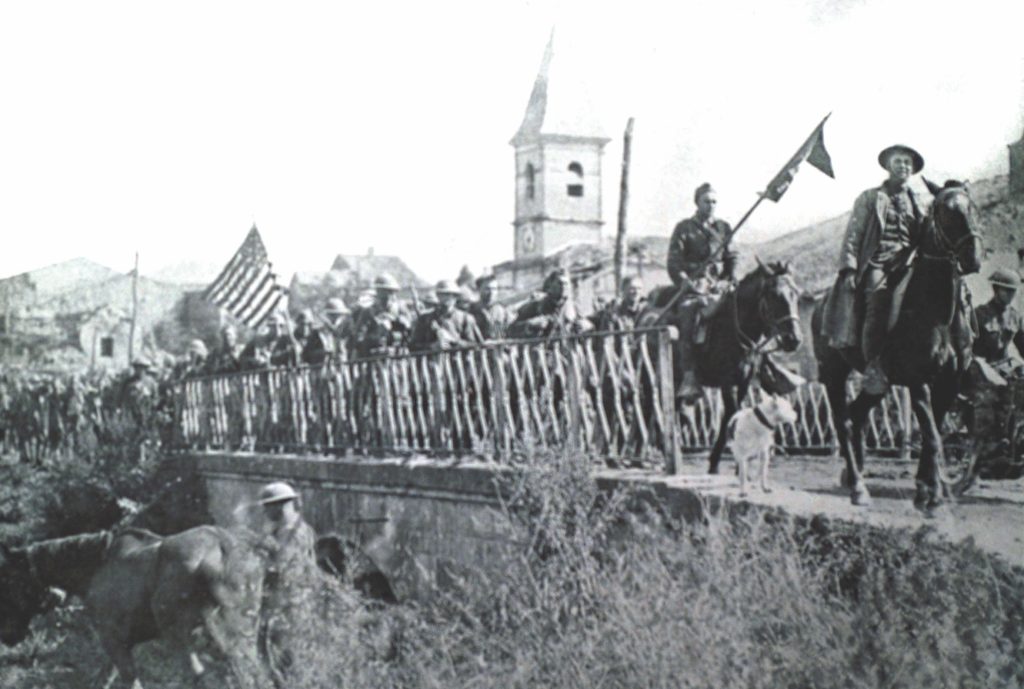
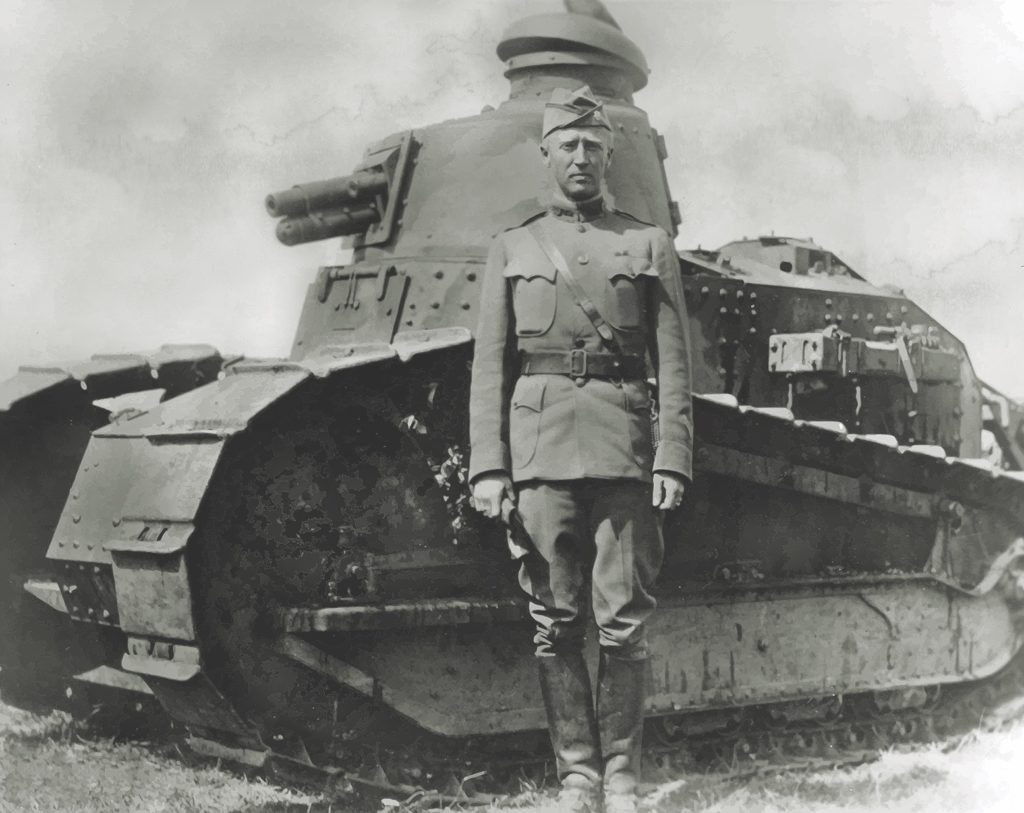
I Corps was on the left flank of the attack. One of the units assigned to support its three divisions on the front line was the 1st Tank Brigade, led by a 32-year-old colonel, George S. Patton. Five days before the start of the attack, Craig had approved Patton’s innovative “Memorandum on the Use of Tanks,” which included a detailed terrain analysis of the ground over which I Corps was scheduled to attack. Craig had the memo reproduced and distributed to I Corps’ divisional commanders. It was the first significant plan to closely coordinate American tanks and infantry in combat.
Right in the middle of the Meuse-Argonne campaign, Liggett moved up to assume command of First Army; Craig remained at I Corps as chief of staff to the new commander, Major General Joseph Dickman—who, by then, was serving in his fifth American war. Just two days after the Armistice went into effect on November 11, 1918, Dickman, with Craig as his chief of staff, assumed command of Third Army, established only six days earlier. Its mission was to serve as the postwar army of occupation for the American sector of the German Rhineland. The new command team had just four days to organize a headquarters from scratch, coordinate the reassignment of the necessary forces from the First and Second Armies, and get everything in position for the start of a large-scale, long-distance movement to the Rhine, scheduled for November 17.
On the evening of November 13, Craig visited Marshall at First Army headquarters, requesting his help in getting the divisions moving while Craig pulled together a new staff. Marshall immediately committed all of First Army’s resources to supporting Dickman and Craig. He also helped Craig by detailing officers, NCOs, and clerks to Craig’s staff. And on the 17th, Third Army moved out on schedule. During the subsequent interwar years, Craig would remember Marshall as both a master of military staff work and a consummate team player.
FOLLOWING THE WAR, Craig and Marshall continued to interact professionally. Returning to the United States in 1919, Craig reverted to his permanent rank of major. In early 1920, he joined General John J. Pershing on an inspection tour of all army posts in the United States. Also accompanying the former commander of the American Expeditionary Forces were Colonel Fox Conner and Pershing’s aide-de-camp, now-Captain George Marshall. During that tour, Craig, Conner, and Marshall cemented a close relationship.
By 1923, Craig had worked his way back up to brigadier general and was in command of the U.S. Army Cavalry School at Fort Riley, Kansas. One of the schools’ graduating students that year was George Patton, whom Craig remembered well from France and the Meuse-Argonne. On his final student evaluation form, Craig wrote of Patton: “Very energetic, enthusiastic and versatile officer. Does Everything exceptionally well.”
The high opinion went both ways: that October, Patton wrote directly to Pershing—“cavalryman-to-cavalryman,” as he put it—to recommend Craig’s appointment as the next chief of cavalry. A month later, Pershing wrote back to Patton: “Craig seems to be the general choice, and if things work out as I think possible, he will probably be selected.”
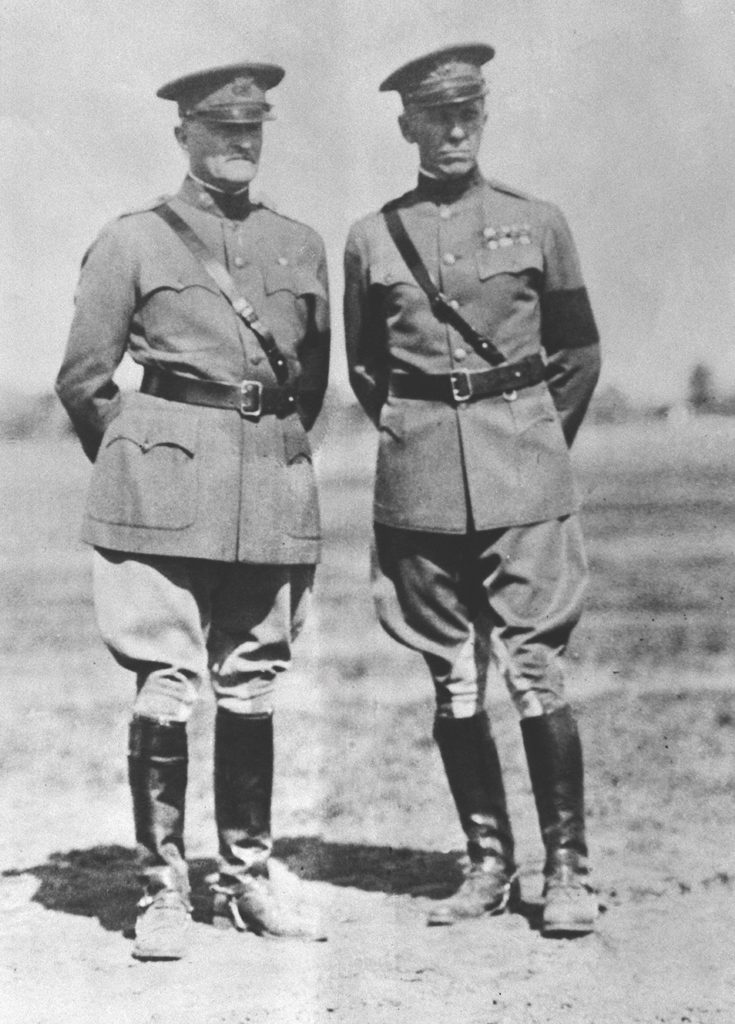
He was, becoming chief of cavalry in 1924. Shortly thereafter, Patton graduated from the U.S. Army Command and General Staff School as that year’s honor graduate. Craig sent Patton a note of congratulations that reflected his own professional values: “I firmly believe that lasting individual honor and preferment are gained only through individual effort to improve the efficiency of the service at large.”
Craig advocated for officers he viewed as especially worthy, although not always with the results he wanted. In 1926, Craig teamed up with Fox Conner—then the Deputy Chief of Staff of the U.S. Army (the equivalent of today’s Vice Chief of Staff)—to lobby for Patton’s assignment as Commandant of Cadets at West Point. Their effort fell short, and another officer received the assignment. Writing to Patton, Craig told him: “My dear George…I regret very much that circumstances existed as they did, as you are the one fellow for whom I am always willing to go to bat.”
In 1934, when Craig was the commanding general of the IX Corps Area, responsible for all U.S. Army units on the West Coast, he was a member of a promotion board that recommended Marshall for brigadier general. Marshall, however, was not selected for promotion. Craig responded by sending a testy letter to Secretary of War George Dern complaining that the army’s flawed promotion system resulted in too many deadwood senior colonels being promoted to the general officer ranks, while high-quality officers like Marshall were passed over. The belief that promotions should be based on merit and not seniority was one that Marshall later took to heart, with tremendous effectiveness.
The following year, on October 2, 1935, Craig succeeded General Douglas MacArthur as U.S. Army Chief of Staff. He had not been MacArthur’s choice of successor, but he had been strongly supported for the position by General Pershing, who still carried tremendous influence in American military circles. In July 1938, Craig brought Marshall, a brigadier general by then, to Washington, D.C., as chief of the War Department’s War Plans Division. Just three months later, he named Marshall the Deputy Chief of Staff of the U.S. Army. In making Marshall the second-most important general officer on active duty, Craig was sending a clear signal that he was positioning Marshall as his successor.
AS U.S. ARMY CHIEF OF STAFF, Craig fought a never-ending battle against the bureaucratic forces of complacency and inertia. When he assumed office, one of his first actions was to initiate a complete review of the army’s existing war plans. As he suspected, those plans were completely unrealistic. They were largely based on the assumption that the army had large stocks of equipment and ammunition left over from World War I—items that, in fact, either no longer existed or were long since obsolete. The plans also had the Regular Army training the National Guard and the Army Reserve for rapid mobilization. But the Regular Army of 1935 was a mere skeleton of what it had been at the end of World War I.
Craig spent most of his time in office working to convince Congress of the army’s great weaknesses in manpower and materiel, and fighting to modernize the force in the face of the severe budgetary and other constraints of the 1930s. Institutionally and culturally, the U.S. Army’s mindset was still mired in the world of 1919. Thus, while fighting to convince the civilian leaders who controlled the purse strings of the critical need to modernize the army, Craig also had to fight internal battles to overcome resistance to change from those who believed the organizations, equipment, and tactics that had withstood the test of combat in World War I were still good enough for any future war. He faced intense opposition from older and entrenched senior officers who believed that change would threaten their own positions.
The army’s infantry division structure was one of those bureaucratic battlegrounds. The main point of contention was whether to retain the huge “square” division structure of the World War I-era or adopt a smaller and more flexible “triangular” structure. The massive square division of two infantry brigades of two regiments each, supported by an artillery brigade, was a cumbersome force of 28,000 men—about the size of an entire French, British, or German corps in World War I. It was difficult to control and more difficult to maneuver. The triangular division was a far more flexible force of three infantry regiments, supported by a four-battalion divisional artillery. It was only about half the size of the square division and far more mobile. In 1937 Craig—who had long supported experimenting with lighter and more flexible divisional organizations—appointed a special three-man board to recommend a final structure. The board consisted of Major General Fox Conner, Brigadier General George Marshall, and Brigadier General Lesley J. McNair, who would go on to command U.S. Army Ground Forces in World War II. Marshall later referred to the board as a “stacked deck for the triangular division.”
But because Conner had to retire for health reasons, the board never met, and it largely fell upon McNair to develop the smaller, more mobile “Proposed Infantry Division,” following extensive field tests. Marshall later acted quickly to formalize this, approving the new triangular division organization on September 14, 1939—only two weeks after he was named chief of staff. With the Germans and Japanese having the mobility and flexible divisional structures to run circles around the old square divisions, that decision quickly proved its worth.
Craig also made a number of important decisions that strengthened the army’s implementation of armored warfare. In June 1937, he ordered an examination of its 1931 mechanization policy, which had divided development responsibility between the infantry and the cavalry—something that Craig knew would limit its scope. The cavalry, for example, tended to limit the use of tanks and other armored vehicles to the traditional horse cavalry roles of reconnaissance and screening; Craig recognized that mechanized forces had offensive potential far beyond that. This was a significant insight for an officer who had once been the chief of cavalry. In March 1938, Craig took the War Department’s mechanization policy out of cavalry and infantry hands and centralized it. Within a few short years, that action directly led to independent, self-contained mechanized forces capable of deep operational employment—in other words, armored divisions.
In the area of global military strategy, Craig kick-started the process that produced one of the United States’ most important policy changes prior to the start of the war. The version of “War Plan Orange” for war with Japan, initially adopted in 1924, was obsolete and completely unworkable. In May 1938, at Craig’s constant prodding, the Joint Army and Navy Board began revising the entire existing set of war plans with color-coded names for specific individual opponents. That was a feat: with no unified Department of Defense at the time to provide oversight, the army and navy were their own standalone fiefdoms. The Joint Board was the body responsible for developing and synchronizing joint global strategy. But, with no authority figure over them to make the final decisions, it all had to be done by consensus.
By October 1939, the final result was the famous five “Rainbow Plans,” developed to meet the threat of a two-ocean war against multiple enemies.
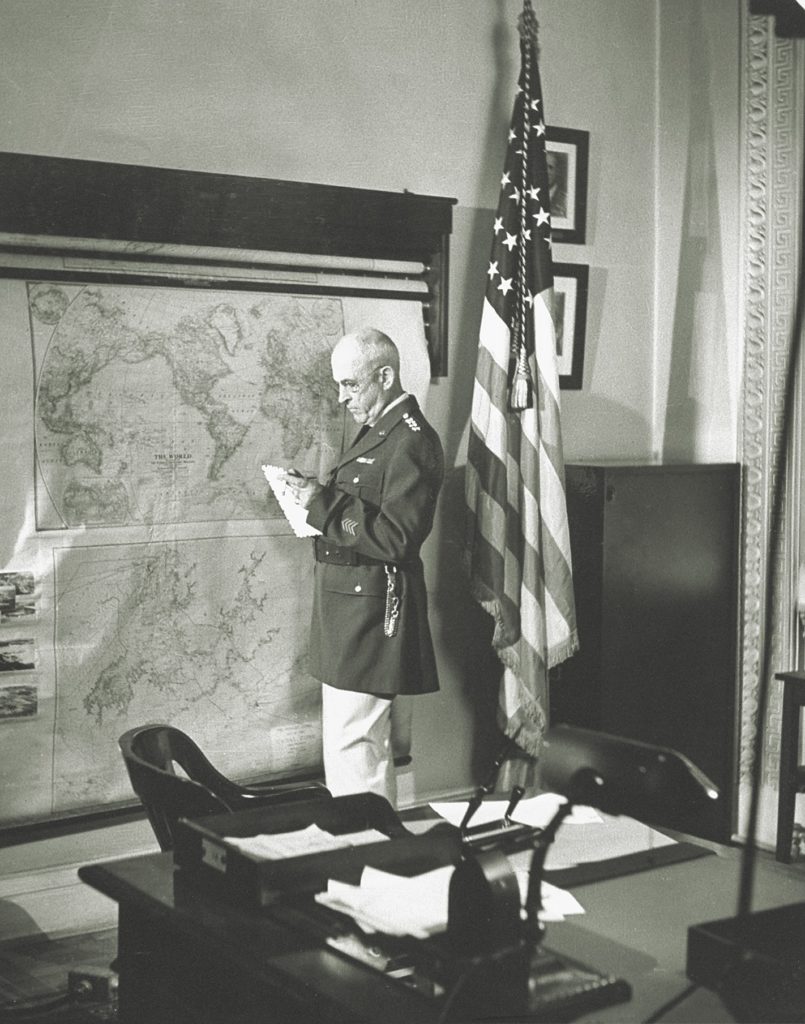
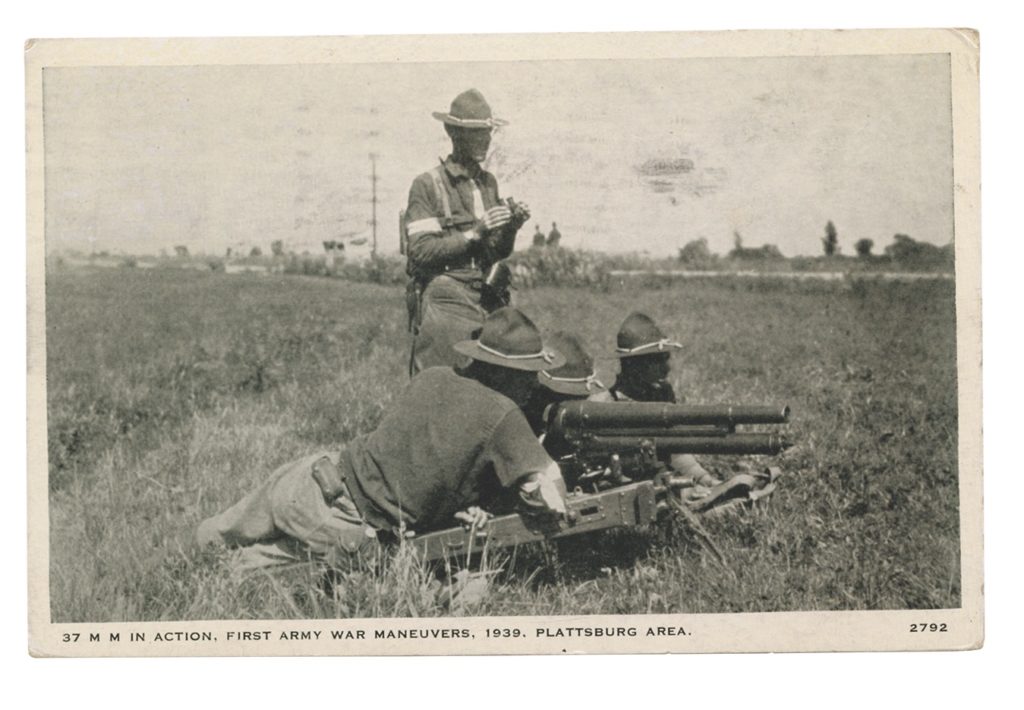
During those lean years of the 1930s, there were few resources available for field maneuvers—an essential component of larger unit training. When the possibility of greater military appropriations slowly started to appear in late 1938, Craig directed War Department staff to revamp and expand an upcoming First Army maneuver, scheduled for the following summer. Perhaps the most important change to the exercise was Craig’s insistence that the Army Air Corps focus on the direct support of ground forces, in contrast to its preferred missions of strategic bombing and air superiority.
The resulting Plattsburg Maneuvers of August 1939, held just before Craig left office, were then the largest American maneuvers to occur in peacetime. More importantly, the exercise, conducted in upstate New York, was the essential foundation upon which was built the pivotal Louisiana Maneuvers of August and September 1941—the first real test of America’s ability to conduct the type of large-scale, combined-arms warfare that the Germans were then practicing in the Soviet Union.
In late 1938, the War Plans Division also issued the results of a study Craig had directed that called for increases in army manpower and the actual formation of the army’s five infantry divisions—which, at that point, only existed on paper. Throughout his tenure as chief of staff, Craig had to work continuously to reassure an often-skeptical Congress that the changes he was promoting were for purely defensive purposes. Congressional skepticism toward defense spending was deeply rooted in traditional American isolationism. Even as the global war clouds were gathering throughout the 1930s, the majority of Americans and most of their political leaders clung to the belief that the country could somehow stay out of it if the rest of the world exploded in war.
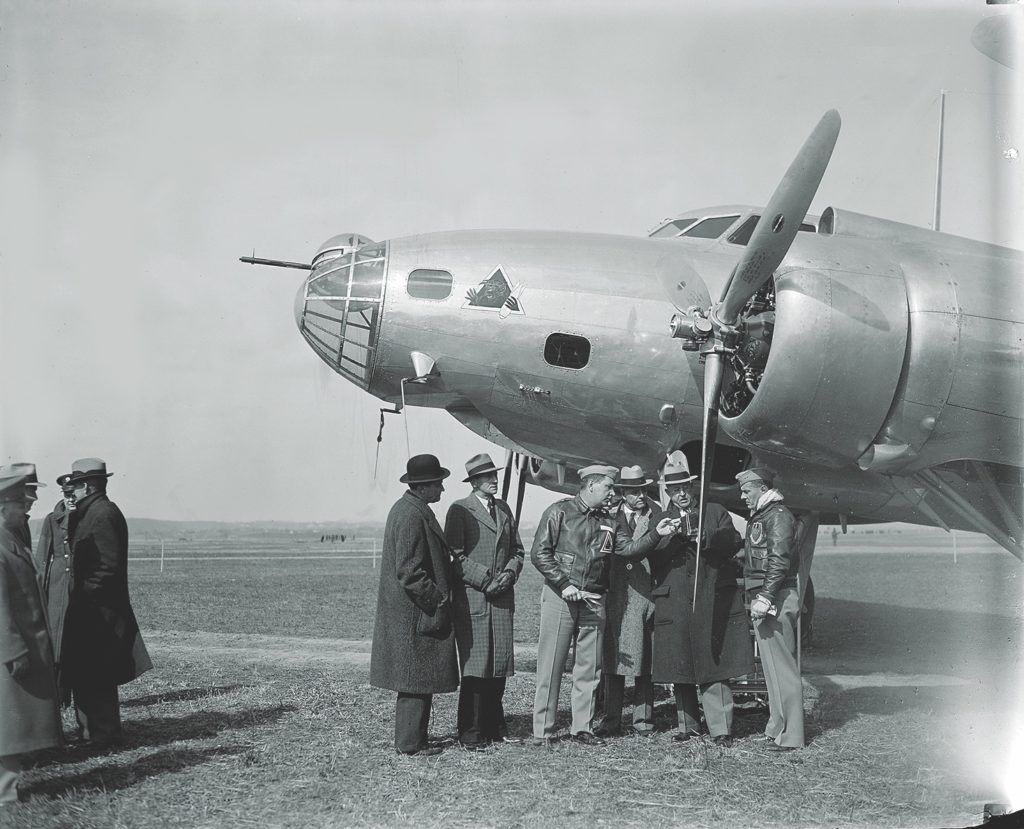
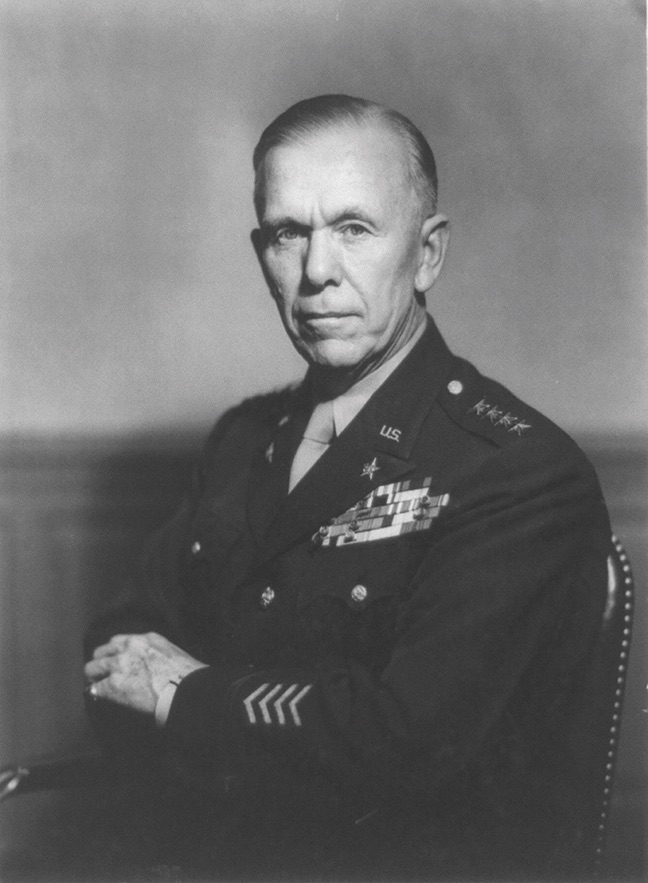
The Neutrality Acts of 1935, 1936, and 1937 severely limited the United States’ ability to provide material support to the potential allies that most military leaders believed the U.S. would soon have to fight alongside. President Franklin D. Roosevelt initiated a “cash and carry” policy to circumvent those acts, based on the thin fiction that selling weapons to any country that could come to America and pick them up for transport home complied with the Neutrality Acts restrictions. Britain was the primary beneficiary of that policy. In 1938, the British requested to purchase some early models of the B-17 bomber. Army Air Corps Headquarters opposed the request because of its own expansion program, but Craig overruled the Air Corps. The sale went through on the specific condition that the transfer would not delay any already-programmed deliveries of new bombers to the Army Air Corps.
Another of Craig’s important contributions to American preparedness for a major war was the “Protective Mobilization Plan of 1939.” Completed at Craig’s direction by the War Plans Division in December 1938, it was based on a two-stage expansion of the army. It called for the establishment of an “Initial Protective Force” of about 400,000 troops—mostly Regular Army and National Guard—to be operational by 30 days after mobilization. An expansion to 1,150,000 active troops by 240 days after mobilization would follow. A $575 million arms program supported the plan. It was a small effort compared with the later reality of World War II but—considering the state of the U.S. Army in 1939—it was a bold step forward in the face of political and bureaucratic gridlock. It became the army’s basic prewar expansion plan.
As a first step, Craig sent Marshall to Congress in February 1939 to argue for an increase in the army’s authorized strength by 40,000. He also directed Marshall to press for the need for additional funding to equip the Regular Army and National Guard with modern equipment—especially the M-1 Garand semiautomatic rifle and the new M2A1 towed 105mm howitzer, then two of the world’s most advanced weapons. Marshall managed to secure an authorized increase of only 17,000 troops, but it was a start, and he did get appropriations for the new weapons.
In his final “Annual Report of the Chief of Staff,” issued in June 1939, Craig urged the U.S. government to reorganize the army’s five geographically scattered standing divisions. These would be based in a fully-garrisoned outpost line running from Alaska to Hawaii to Panama to Puerto Rico, which needed to be established. He also recommended the creation of a war reserve with equipment for one million men. And Craig accurately warned that because of the time lag in industrial production, the modest appropriations already approved for increased military equipment would not “be fully transformed into military power for two years.”
Ultimately, of course, the global war the United States fought from 1941 to 1945 was different from the defensive scenario Craig had envisioned in 1939. Following the Pearl Harbor attack, and in the face of rapidly changing strategic realities, General Marshall had to completely revise war plans and force structures several times. But it may well have been impossible for him to do so without the foundation that Craig had left for him.
As Craig’s mandatory retirement date approached in August 1939, he and Secretary of War Harry H. Woodring forcefully lobbied President Roosevelt to appoint Marshall as the next chief of staff, even though Marshall was then junior in seniority to 32 other general officers. The timing of his appointment was eerie. George C. Marshall officially assumed the duties as chief of staff on September 1, 1939—by sheer coincidence, the day Germany marched into Poland.
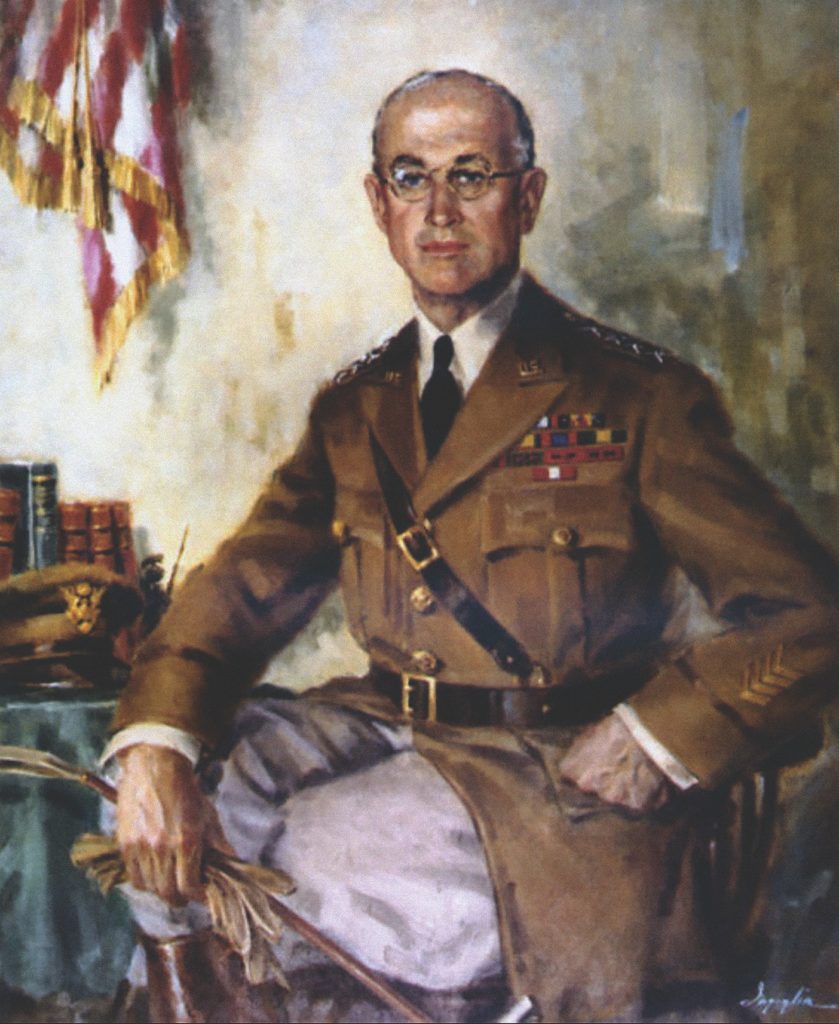
MALIN CRAIG’S SERVICE to the U.S. Army continued after he departed as chief of staff. One of the most difficult tasks Marshall took on in his new role was the forced retirement of “deadwood” among the army’s senior officers—those too old or physically and mentally unfit to lead troops in combat. This process, which ultimately resulted in the elimination of some 600 officers, was managed by Secretary of War Henry L. Stimson’s War Department Personnel Board, established on September 26, 1941. Marshall brought Craig back on active duty as a full general to serve as president of that board. It was a difficult and even gut-wrenching job that had to be conducted by someone who shared Marshall’s ideas about the qualifications needed for senior combat command and the critical need to clean out the ranks of senior officers—including longstanding personal friends of both Marshall and Craig.
Another of the board’s primary functions was the screening and selecting of senior-level civilian specialists for direct commissions in the army. The most senior of those went to William “Big Bill” Knudsen, a native of Denmark, who in 1940 was the president of General Motors. Directly commissioned as a lieutenant general in January 1942, Knudsen was appointed as the Director of Production, Office of the Under Secretary of War. With his expert guidance, American production of machine tools for the manufacture of war materiel tripled.
Craig was still on active duty when he died at age 69—at Walter Reed Army Hospital in Washington, D.C.—on July 25, 1945. He is buried in Arlington National Cemetery. Craig left no memoirs, and no major biographies have been written about him. Ideally, some historian will take on that task. The mild-mannered, balding, bespectacled man looking out from his official chief of staff portrait looks more like a high school English teacher than the hard-nosed operations officer, dynamic innovator, and brilliant strategist he was. Malin Craig was the kind of officer Frederick the Great was talking about when he told his generals, “Be more than you seem to be.” ✯
This article was published in the April 2021 issue of World War II.

